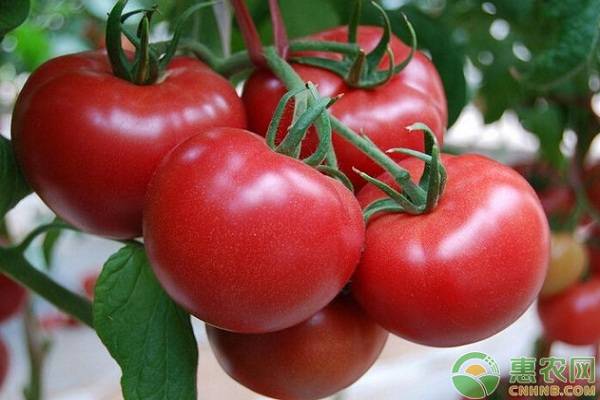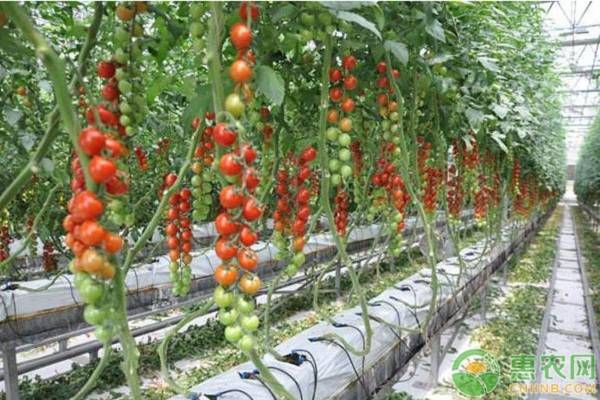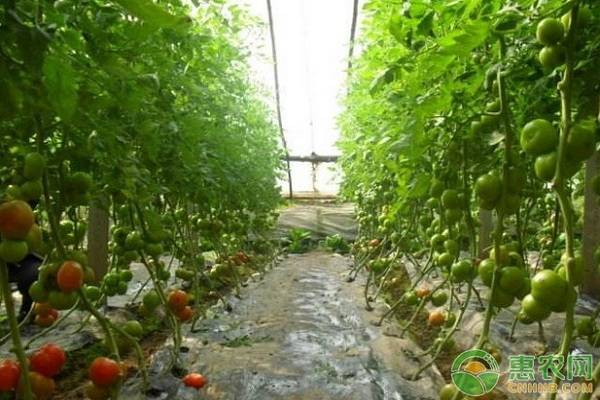How to treat tomato rot? Tomato tendon rot, also known as tomato strip rot, is a physiological disease that is more common in tomato pests and diseases. When the disease is light, only part of the fruit quality is reduced, and even in severe cases, it may lead to rejection. Let's take a look at the symptoms and prevention measures of tomato rot. First, the symptoms There are two main types of symptoms of rot disease: one is brown rot and the other is white. (1) Brown rot type When brown gluten-type rot disease occurs, local brown mites and even necrotic spots appear on the fruit surface, and the flesh is stiff. The vascular bundles in the fruit are browned when the fruit is cut, and sometimes the brown flesh is found in the flesh. When the incidence is light, the diseased area is difficult to color, and the surface of the red ripe fruit has obvious green or light green spots, the flesh becomes hard and the fruit becomes a cavity. (2) White-type rot disease The fruit of white-type rot disease is unevenly colored, partially whitened, poorly colored, and the flesh becomes hard and the quality is poor, which occurs mostly in the late stage of fruit ripening. Second, the period of occurrence Most of the tomato tendon rot occurred on the first spike and the second spike, and the diseased fruit showed obvious symptoms during the transition period. Third, the cause of the disease The current research on the cause of tomato rot is not very clear. Most of the existing reports are caused by carbon and nitrogen metabolism disorders, which can be roughly divided into photosynthesis reduction, nitrogen assimilation ability, and abnormal sugar decomposition system caused by potassium deficiency, resulting in a decrease in carbon/nitrogen ratio. For this aberrant metabolism, different varieties produce different responses, which result in different types of rot-to-brown and white variants. The specific influencing factors are as follows: (1) Impact of planting varieties The tendon rot is related to the cultivar. Different tomato varieties have a serious difference in the severity of their rot. If you choose a strain that is prone to rot, it is easy to develop. (2) Factors affecting the reduction of photosynthesis 1. Temperature. Low temperatures may cause a decrease in the function of photosynthetic products and a decrease in carbohydrates in the fruit, resulting in the occurrence of tendon. Excessive temperatures not only reduce the accumulation of photosynthetic products, but also affect transportation. Therefore, it is possible that the temperature is too high or too low, and this occurrence is different from the temperature-dependent color change, and vascular bundle necrosis occurs. 2. Weak illumination. Many studies have shown that weak light causes the occurrence of tendon rot. When the plants are exposed to low light and strong light, the disease will be further promoted. During the whole growth cycle of tomato, the young fruit stage is most susceptible to rot disease due to the influence of light. In actual production, there are many factors that cause weak illumination, such as excessive planting density, untidy pruning, timely rainy fog, excessive light transmittance, and low light transmittance of covering materials. These factors can promote rot disease. occur. 3. Carbon dioxide. The low concentration of carbon dioxide in the greenhouse leads to weak photosynthesis of plants, resulting in less accumulation of photosynthesis products. 4. Excessive soil moisture. According to the survey, in the same greenhouse, the accumulation of water in the vicinity of the irrigation channel to make the soil moisture saturated, can increase the occurrence of rot. (3) The influence of nutrients 1. Apply unfertilized organic fertilizer. The investigation found that the application of unfertilized human excrement as organic fertilizer would aggravate the occurrence of rot. 2. Excessive nitrogen. Excess ammonium or nitrite nitrogen is an important factor inducing tendon. Excessive nitrogen application or nitrogen metabolism is blocked, resulting in excessive absorption of nitrogen in the plant, which is easy to cause rot. 3. Lack of potassium. Studies have shown that potassium deficiency is an important factor inducing tomato rot. Potassium deficiency affects the movement of carbohydrates from leaves to fruits and the conversion of starch and sugar in fruits, leading to serious tomato rot. (4) Certain viruses can cause rot disease Tests have shown that the occurrence of tomato tendon is closely related to TMV infection. After TMV infects the plant, especially the infection caused by the infection 15~20d before harvesting, can increase the incidence of white-type rot disease. Fourth, prevention and control measures (1) Planting resistant varieties According to local conditions, plant resistant tomato varieties are selected. (2) Scientific cultivation management In winter facilities, plastic film with good light transmission is used, suitable for thin planting, scientific pruning; increase carbon dioxide gas fertilizer, timely ventilation and ventilation, adjust the temperature of the shed, encounter extreme weather, and take temporary heating measures in time; Keep the soil moisture suitable for a small number of times. In the low temperature and low temperature winter, the auxiliary light source can be added where there are conditions. (3) Rational fertilization More decomposed organic fertilizer to change the physical properties of the soil and promote root development. Formulated with fertilizer to ensure the coordination of the proportion of each element, especially the combination of nitrogen and potassium, to ensure a certain K / N ratio, K / Ga ratio, (K + Mg) / Ga ratio, is conducive to fruit coloring and reduce the occurrence of tendon rate. After the fruit is set in the tomato, the multi-purpose compound fertilizer containing potassium, calcium, magnesium, boron, zinc and the like is applied to the appropriate foliage. (4) Prevention and treatment of viral diseases One of the pathogenic conditions of white-type rot disease is caused by the infection of TMV virus. The prevention and treatment of tomato virus disease can effectively reduce the occurrence of rot disease, and pay attention to the comprehensive prevention and control of TMV virus. For the wonderful pictures and popular comments about tomato tendon rot, you may be interested in the following recommended contents, please read. Eas Detector,Eas Anti Theft System,Electronic Article Surveillance,Sensormatic Anti Theft System Wenzhou Boshine Electronic Security Co. Ltd , https://www.boshine.com

